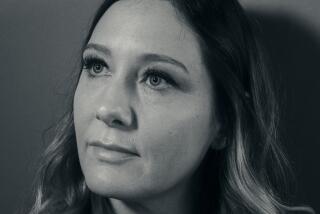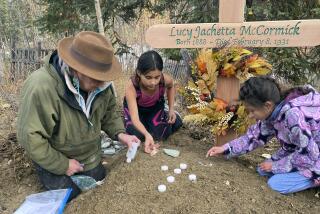In Quiet Beauty, Sitka Offers a Look Back in Time
- Share via
SITKA, Alaska — The people of Sitka are pleased that James Michener is living in their town now, doing research for his next best-selling novel. His presence seems to confirm their belief that Sitka is the choice place for creative, interesting people to live.
Back in the late 1700s the Russians decided to establish their Alaskan colonial base in Sitka, no doubt attracted by its sheltered and picturesque setting.
By the early 1800s the Russians were hunting the sea otter nearly to extinction, and Sitka became the capital of a fur trading empire that reached all the way to California. When San Francisco was still a rowdy outpost of muddy roads and log cabins, Sitka was known as “Paris of the Pacific.”
To this day the Russian presence is felt, not only in the historical sense but in everyday life, from little Tlingit Indian boys named Dimitri to the thriving 150-family congregation of the Russian Orthodox church, St. Michael’s Cathedral.
Burned to the Ground
In 1966 the historic wooden cathedral burned to the ground. As the fire raged, Sitka residents responded by forming a human chain into the inferno to save the priceless artifacts inside.
The church has been rebuilt, right in the middle of the town’s main street where it has stood from the beginning, and the carbon-copy structure again houses the original contents, an irreplaceable collection of Russian Orthodox ecclesiastical treasures, from centuries-old icons to precious stones.
The cruise ships that line Alaska’s Inside Passage from late May to the end of September routinely spend four hours in port at Sitka.
This is enough time for passengers to board a bus and be driven around the town for an overview of the main points of interest, have a quick glimpse and a fast picnic lunch at the Sitka National Historical Park, take pictures of the cathedral, watch a rousing performance of the New Archangel Dancers and, if there’s any time left, spend some money at a gift shop or art gallery.
Soaking Up the Life Style
Better, if possible, to spend a night or two in order to absorb the quality of life that the people who live here enjoy about Sitka.
An easy hike takes one along a beautiful two-mile trail through the forest in the national park, past a collection of totem poles up to 80 feet tall. Rising on a clear day behind the surrounding hills, like a backdrop upon an idyllic stage setting, is the volcanic Mt. Edgecumbe. Spilling from the ragged edges of town are the blue waters of Sitka Sound and the forested islands offshore.
Sitka is on Baranof Island, the largest island in southeast Alaska, and the roads out of town lead only to the end of the road. But it’s a fine town for a stroll, weather permitting.
Just off the tourist map and not mentioned in the sightseeing brochures is perhaps the most photogenic quarter in all of town. It’s the road that leads from the Sheffield Hotel to Thomsen Harbor, and it takes you past small Anb Harbor. Along the way on every hand you’ll see dilapidated buildings, quaintly decorated houses, derelict fishing boats, frayed nets and weathered fences, old dogs and little children. That stroll along Katlian Street is stronger in memory than the sights from the tour bus window.
Time for Soul-Searching
Sitka does give the creative soul plenty of time for soul-searching, what with 95 inches of rain a year drumming against the wrong side of a windowpane (the right side being the one on the same side as the cozy fire in the fireplace).
A gray and drizzly day garnered this comment from a contented resident: “Oh, yes, it was a little foggy. Just a nice, soft day.”
While in Sitka, be sure to visit the Sheldon Jackson Museum to see Russian artifacts and an excellent collection of Indian and Eskimo art; the Russian Bishop’s House, built in 1842 and being restored to the tune of $3.5 million; watch the New Archangel Dancers in a free performance especially for tourists (a group of women who put on a really good show of lively Russian folk dances), and of course the Byzantine-domed cathedral.
Special events in Sitka include the Summer Music Festival that draws guest artists from all over the world, and the annual Alaska Day Festival in mid-October that commemorates the Alaska Purchase of Oct. 18, 1867, when, for $7.2 million or about 2 cents an acre, Russia sold the great land to the United States.
The Shee Atika Lodge and Sheffield Sitka (both about $80 for a double) are centrally located and comfortable. For dining, residents recommend the Wild Strawberry, a pleasant restaurant in an old pioneer house, and the Channel Club, halfway between town and the ferry dock.
Information is available from the Sitka Convention and Visitors Bureau, Box 1226, Sitka, Alaska 99835.
More to Read
Sign up for The Wild
We’ll help you find the best places to hike, bike and run, as well as the perfect silent spots for meditation and yoga.
You may occasionally receive promotional content from the Los Angeles Times.






